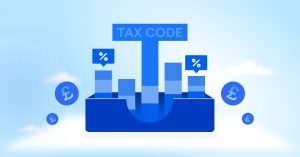Help to Save scheme is a government initiative designed to assist those who may be struggling financially. It aims to encourage saving among lower-income groups by providing eligible individuals with financial incentives.
The two most important things about the Help To Save Scheme that you need to remember are;
- you can save any amount between £1 and £50 per month and
- can own the account for up to 4 years.
Help To Save account doesn`t pay an interest rate on the account balance. Instead, it offers bonus payments designed to encourage continuous saving. The bonus is 50% of your highest savings, paid by the government.
Eligibility for Help to Save Account
To be eligible for a Help To Save account;
- you must either be receiving a Working Tax Credit or
- your take-home pay in Universal Credit is £658.64 or more for the last assessment period. That amount includes you and your partners` total.
- you must be entitled to have a working tax credit and receive universal credit.
How do I open a Help to Save Account?
You can apply for a Help To Save account online, through the government`s official website.
By following the instructions under Government Gateway you can open a Help To Save account.
The application process is straightforward, and you will need to provide some personal information such as your name, National Insurance number, date of birth, and details about your benefits/tax credits.
If you don`t have access to the internet, you can always call 0300 322 7093 Help To Save helpline, just make sure your National Insurance Number is ready.
How do Payments Work?
Payments are made from your linked bank account by debit card, standing order or direct debit.
You can pay any amount between £1 and £50 per month. The savings will earn no interest but after 2 years the BONUS is paid on a percentage of the highest balance that has been saved in the previous two years.
It`s also important to remember that your savings are NOT subjected to tax.
Your debts are irrelevant to the Help To Save account, which means you can still open a Help To Save account through the Government Gateway even if you are in debt. However; it`s not recommended if you are not usually able to catch up with your periodic payments.
What Happens to My Help To Save Account After 4 Years?
After 4 years, your Help To Save account will close. You should receive a closure letter from HM Revenue and Customs (HMRC). Once the account is closed, you won`t be able to reopen it. However, you can continue using your existing online Help To Save account if you wish.
After your account is closed, your payments will be transferred into a designated bank account that you inform the government.
Can I Withdraw Money From My Help To Save Account?
You can make withdrawals from your Help To Save account at any time.
However, if you withdraw money during a 2-year period, you may lose out on bonus payments for that period. Moreover, the amount withdrawn will not count towards the savings balance used to calculate future bonuses.
Conclusion
The Help To Save scheme is a valuable resource for those who may be struggling financially. It offers incentives to encourage saving like bonus payments every 2 and 4 years and provides individuals with the opportunity to improve their financial situation. If you are eligible for a Help To Save account, it is recommended that you take advantage of this initiative and start building your savings for a better future.
Help To Save account may not be for you if you are usually struggling to keep up with your current debt. Having said that being in debt isn`t an obstruction to opening a Help To Save Account.
We hope this simplified blog helped you decide if the scheme is the right one for you.













